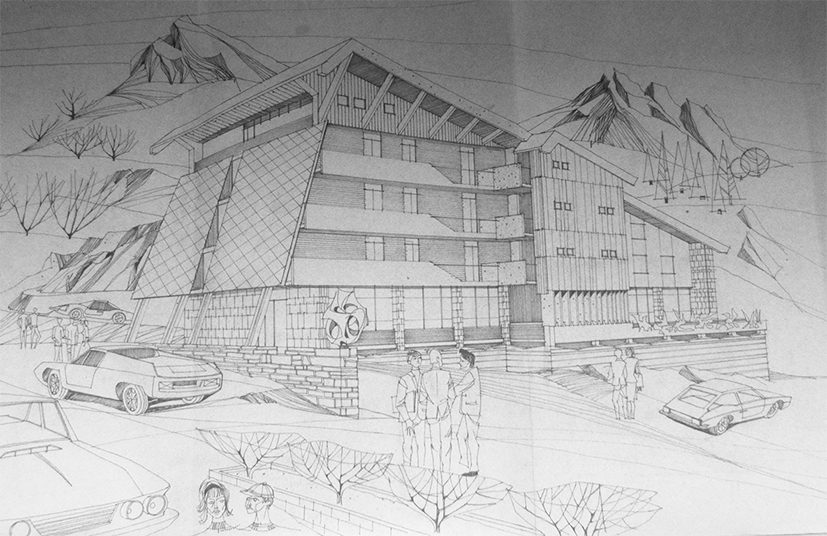
Ambitions and (in)successes of mass tourism on the Gran Sasso d’Italia. Plans and projects for Castel del Monte and Campotosto in the 1960s-70s
Abstract
For centuries, high-altitude landscapes remained untouched by human activities. Between the 19th and 20th century, the construction possibilities offered by industrialisation and the economic prosperity in Europe after the second World War period, started a progressive modification of the Italian mountain skyline. The most significant interventions generally took place above 1,500 metres altitude over sea level, where snow persisted in the winter months. Alpine skiing, the magical discipline of ‘gliding’, was born and developed within this context, as the business of high-altitude mass tourism too.
Right from the beginning of the 20th century, in the Apennines, and on the Gran Sasso d’Italia in particular, the highest and most significant peaks became attractive hubs for the first ski facilities, which were created on both the L’Aquila and Teramo sides. Less successful were the initiatives for Castel del Monte and Campotosto, that definitively died out in the following decade. These areas, on the margins of the Gran Sasso region [Fig. 1], were undertaken in a delicate and complex context at the end of the 1960s. In those years, the mass tourism profit due to Alpine skiing began to decline, the interests of local communities clashed with entrepreneurial initiatives, and the process of formation of the National Park was in sight, ready to limit building investments on areas of environmental value.
This study analyses the planning instruments and building proposals for these two locations as evidence of the desire to import the mass tourism system of the Alpine area to the mountains of L’Aquila. It lies, ever since, on the limbo between remaining magnificently virgin and being terribly abandoned.
DOI: https://doi.org/10.20365/disegnarecon.31.2023.11
Keywords
Full Text:
PDFReferences
Dematteis, M., & Nardelli, M. (2022). Inverno Liquido. Roma: DeriveApprodi srl.
Battista, V. (1999). Capitignano ad occidente del Gran Sasso: nel parco nazionale del Gran Sasso e Monti della Laga. Capitignano: Municipality.
Pietrostefani, S. (1954). Il turismo come fattore d’incremento della economia montana. In Camera Commercio Industria e Agricoltura L’Aquila (Ed.), Convegno provinciale della montagna (pp. 3-14). Pescara: Tipografia Tontodonati & C.
Tatsos, M. (2023). Belle Époque alpina. Meridiani Montagne, 120, 19-39.
Paolucci, M., & Ciranna, S. (2023). The other side of Gran Sasso: Campotosto area in the 20th century. In Proceedings of IMG23 (pp. 302-309). Alghero: Publica.
Sistema Documentario dei beni culturali del Club Alpino Italiano (CAISiDoc). Retrieved February 2, 2023, from https://caisidoc.cai.it/.
Istituto Nazionale di Statistica (ISTAT). Retrieved March 2, 2023, from http://dati.istat.it/index.aspx?queryid=18545.
Archivio di Stato dell’Aquila (ASAQ), Soprintendence fund of BAAAS Bellezze Naturali, L’Aquila, Italia.
Archivio di Stato dell’Aquila (ASAQ), Archive of the Ente Provinciale del Turismo (EPT), L’Aquila, Italia.
Archivio di Stato dell’Aquila (ASAQ), Archive of the Prefettura
dell’Aquila, L’Aquila, Italia.
Refbacks
- There are currently no refbacks.
Copyright (c) 2023 Simonetta Ciranna, Marco Paolucci
DISEGNARECON
ISSN 1828 5961
Registration at L'Aquila Law Court no 3/15 on 29th June, 2015.
Indexed in SCOPUS. Diamond Open Access. All papers are subjected to double blind peer review process by qualified reviewers.
Journal founded by Roberto Mingucci
